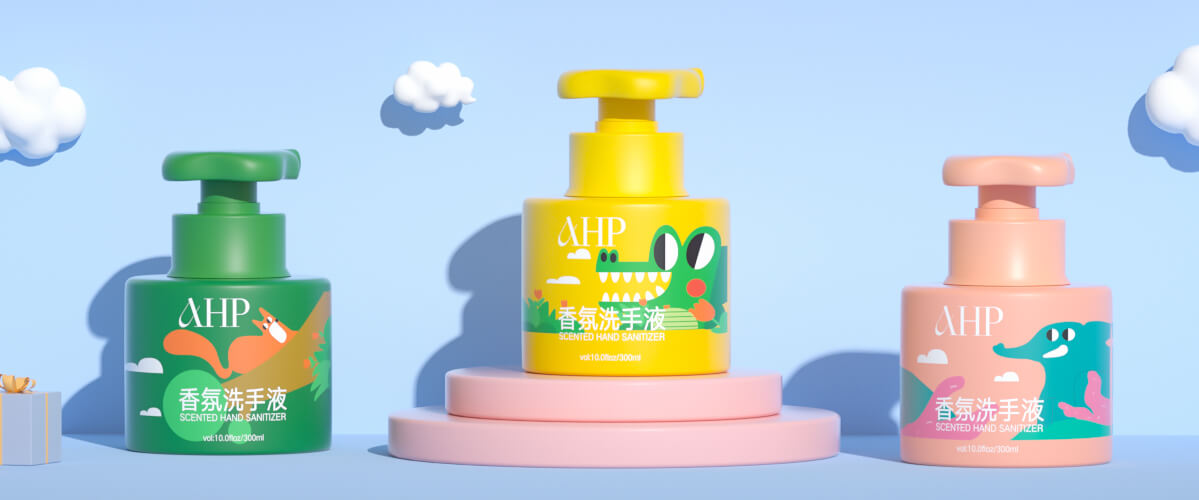What is Thermal Transfer Printing? How does it contribute to the world of cosmetic packaging? These questions have intrigued me as I delve into the fascinating world of printing technologies and their applications. In this article, I aim to unravel the mysteries of thermal transfer printing and explore its significance in the realm of cosmetic packaging.
As a packaging enthusiast and someone deeply interested in the cosmetic industry, I have always admired the captivating designs and intricate details that adorn cosmetic products. From the alluring labels on perfume bottles to the eye-catching tags on skincare sets, every element seems to tell a story, leaving a lasting impression on consumers like myself.
In this article, I will take you on a journey through the world of thermal transfer printing, providing insights into its process, benefits, and applications in cosmetic packaging. Additionally, we will embark on a comparative analysis between thermal transfer printing and labeling, exploring the pros and cons of each method in the context of cosmetic packaging.
Outline
Understanding Thermal Transfer Printing:
Thermal transfer printing is a digital printing method that uses a thermal ribbon to transfer ink onto various surfaces, producing high-resolution and durable prints with exceptional clarity and color accuracy. To comprehend its inner workings and grasp its significance, let’s take a closer look at how thermal transfer printing operates and the essential components involved in the process.
1. The Thermal Transfer Process:
At the heart of thermal transfer printing lies a simple yet ingenious process that brings designs to life on cosmetic packaging materials. The key components involved in this process are:a. Thermal Ribbon: The thermal ribbon is a crucial element in thermal transfer printing. It consists of a thin, ink-coated film made of wax, resin, or a combination of both. The ribbon is spooled onto a thermal transfer printer, ready to be transformed into vibrant prints.
- Thermal Print Head: The thermal print head is the engine of the thermal transfer printer. It comprises tiny heating elements that selectively heat the thermal ribbon, transferring the ink from the ribbon onto the packaging material.
- Substrate: The substrate refers to the material onto which the ink is transferred. In cosmetic packaging, this can include labels, tags, or boxes made of paper, plastic, or other suitable materials.
2. The Printing Process:
Now, let’s explore the printing process itself:a. Heat Activation: When the thermal transfer printer receives the printing command, the thermal print head generates heat in specific areas corresponding to the desired design or text. The heat activates the ink on the thermal ribbon, turning it into a liquid state.
- Ink Transfer: As the thermal ribbon comes into contact with the substrate, the liquid ink adheres to the material’s surface. The precise control of the thermal print head ensures sharp and accurate prints, capturing even the most intricate details of the design.
- Cooling and Solidification: Once the ink has been transferred, the material cools rapidly, causing the ink to solidify and bond firmly with the substrate. This quick cooling process ensures the ink’s durability and resistance to smudging, making the printed designs ideal for cosmetic packaging.
3. Benefits of Thermal Transfer Printing in Cosmetic Packaging:
Thermal transfer printing brings a myriad of advantages to the realm of cosmetic packaging:a. High Resolution: The process allows for high-resolution prints, enabling intricate designs, small fonts, and detailed graphics that elevate the visual appeal of cosmetic products.
- Durability: Thermal transfer prints are resilient and resistant to fading, water, and abrasion, ensuring that the packaging remains vibrant and intact throughout the product’s shelf life.
- Customization: Cosmetic brands can easily personalize packaging with thermal transfer printing, catering to different product lines, limited editions, and promotional campaigns to strengthen brand identity.
- Versatility: Thermal transfer printing is compatible with various packaging materials, offering versatility for cosmetic brands seeking diverse packaging options.
In the next section, we will explore the fascinating applications of thermal transfer printing in cosmetic packaging, unraveling the secrets behind the captivating designs that adorn cosmetic products and enhance their market appeal.
Applications of Thermal Transfer Printing in Cosmetic Packaging:
The world of cosmetic packaging is a canvas for creativity, where brands strive to leave a lasting impression on consumers. Thermal transfer printing plays a pivotal role in transforming mundane packaging materials into eye-catching works of art. Let’s explore the captivating applications of thermal transfer printing in cosmetic packaging:
1. Labels:
Labels are one of the most common applications of thermal transfer printing in the cosmetic industry. Whether adorning lipstick tubes, lotion bottles, or perfume flacons, labels serve as the primary medium to convey product information, branding, and regulatory details. With thermal transfer printing, labels come to life with vibrant colors, intricate graphics, and sharp texts, making them visually appealing and informative.
2. Tags:
Cosmetic tags are another area where thermal transfer printing shines. Tags attached to gift sets, premium skincare products, or special edition collections offer ample space for elaborate designs and brand storytelling. Thermal transfer printing ensures that these tags become an extension of the brand’s identity, leaving a memorable impression on gift recipients and consumers alike.
3. Boxes and Cartons:
Cosmetic product boxes and cartons provide more extensive canvases for thermal transfer printing. Brands can utilize this space to showcase their creativity, incorporate product images, and craft an immersive unboxing experience. Thermal transfer printing on boxes enhances their overall presentation, elevating the perception of the product’s quality and luxury.
4. Shrink Sleeves:
Thermal transfer printing finds a niche in the creation of shrink sleeves for cosmetic packaging. Shrink sleeves are versatile and conform tightly to the product’s shape when heat is applied, providing 360-degree branding opportunities. With thermal transfer printing, brands can ensure that their product’s packaging becomes a captivating and eye-catching display in retail environments.
5. Tube Packaging:
Cosmetic tubes, commonly used for creams, gels, and ointments, can benefit greatly from thermal transfer printing. Brands can use this technique to add elegance to their product’s packaging, incorporating branding elements and product information directly onto the tubes.
6. Personalized Packaging:
In the era of personalization, thermal transfer printing empowers cosmetic brands to create unique and customized packaging experiences for their customers. Whether it’s adding a customer’s name, special messages, or individual preferences, thermal transfer printing allows for a personal touch that resonates with consumers on a deeper level.
Thermal transfer printing is more than just a printing technique; it is an art form that brings life and allure to cosmetic packaging. Its applications in labels, tags, boxes, and other packaging elements enable cosmetic brands to express their creativity and engage with consumers effectively.
As we move forward in the cosmetic industry, embracing the magic of thermal transfer printing can be the key to unlocking captivating designs and creating memorable packaging experiences for consumers worldwide.
A Comparative Analysis: Thermal Transfer Printing vs. Labeling in Cosmetic Packaging
While thermal transfer printing stands as a versatile and powerful printing method, it is essential to compare it with other prevalent techniques, such as labeling, to make informed decisions for cosmetic packaging. Let’s delve into a comparative analysis of thermal transfer printing and labeling:
1. Printing Quality:
Thermal Transfer Printing:
Thermal transfer printing excels in delivering high-resolution prints with sharp details and vibrant colors. It is well-suited for intricate designs, small fonts, and complex graphics, ensuring that cosmetic packaging captures the essence of the brand and product.Labeling:
Labeling also produces high-quality prints, but it may lack the precision and clarity that thermal transfer printing offers, especially for smaller labels or detailed designs.
2. Production Efficiency:
Thermal Transfer Printing:
Thermal transfer printing is efficient for both small and large-scale production runs. Once the printer settings are optimized, the process becomes consistent and time-efficient, contributing to streamlined production.Labeling:
Labeling is particularly efficient for large-scale production where pre-printed labels can be applied rapidly. However, manual application of labels might slow down the production process for smaller batches or niche product lines.
3. Material Compatibility:
Thermal Transfer Printing:
One of the strengths of thermal transfer printing is its compatibility with various packaging materials. Whether it’s paper, plastic, or other substrates, thermal transfer printing can produce remarkable prints on a wide range of surfaces.Labeling:
Labeling is also versatile in terms of material compatibility, but some specialized materials or unique packaging shapes may pose challenges during the labeling process.
4. Cost Considerations:
Thermal Transfer Printing:
While thermal transfer printing offers exceptional quality, durability, and customization, it may involve higher initial costs due to the requirement of thermal ribbons and specialized printers. However, for large-scale production, the cost per unit can be more economical.Labeling:
Labeling can be more cost-effective for smaller production volumes since it eliminates the need for specialized printing equipment. However, the cost per unit might be higher for larger quantities due to pre-printed label expenses.
5. Customization Options:
Thermal Transfer Printing:
Thermal transfer printing allows for easy customization and personalization of cosmetic packaging. Brands can create unique designs for different product lines, limited editions, or even individualized packaging, fostering stronger connections with consumers.Labeling:
While labeling also offers customization options, it may be less flexible in terms of changing designs frequently or offering personalized packaging.
Both thermal transfer printing and labeling are valuable printing methods in cosmetic packaging. Thermal transfer printing excels in its superior printing quality, durability, versatility, and customization options. On the other hand, labeling is efficient for large-scale production and may be more cost-effective for smaller batches.
The choice between thermal transfer printing and labeling ultimately depends on the specific needs of each cosmetic brand, considering factors such as design complexity, production volume, material compatibility, and budget constraints. Regardless of the chosen method, the artistry and innovation behind cosmetic packaging play a crucial role in captivating consumers and establishing a brand’s identity in the competitive cosmetics market.
Considerations for Choosing the Right Printing Method:
Selecting the ideal printing method for cosmetic packaging is a critical decision that can significantly impact a brand’s visual identity, production efficiency, and overall consumer perception. To make an informed choice between thermal transfer printing and labeling, cosmetic brands should carefully consider the following factors:
1. Design Complexity:
Consider the intricacy of your packaging designs. If your cosmetic products feature elaborate graphics, small fonts, or intricate patterns, thermal transfer printing is the preferred choice. Its high-resolution prints ensure that every detail is rendered with precision, adding a touch of sophistication to the packaging.
2. Production Volume:
Assess the scale of your production runs. For larger volumes, labeling may offer higher efficiency, especially if using pre-printed labels. However, for brands with varying product lines or limited editions, thermal transfer printing’s flexibility in customization becomes advantageous.
3. Material Compatibility:
Examine the packaging materials you intend to use. Thermal transfer printing is compatible with a wide array of substrates, including paper, plastic, and fabric. On the other hand, labeling might be more suitable for specific materials or unique packaging shapes, especially for shrink sleeves.
4. Budget Considerations:
Evaluate your budget constraints and long-term cost-effectiveness. While thermal transfer printing might have higher initial costs due to specialized equipment and consumables, it becomes more economical for larger production runs. Labeling can be cost-effective for smaller quantities but might incur higher costs as production volume increases.
5. Customization and Brand Identity:
Determine the level of personalization and brand identity you seek to convey through your cosmetic packaging. Thermal transfer printing offers unmatched customization options, enabling you to create unique and individualized designs for different product lines or exclusive releases.
6. Eco-Friendliness:
With growing environmental concerns, consider the sustainability aspect of your packaging choices. While both methods have their eco-friendly options, thermal transfer printing on recyclable or biodegradable materials can align better with eco-conscious consumers.
7. Production Timeline:
Examine your production timeline and turnaround requirements. Thermal transfer printing offers consistent and efficient production once settings are optimized, making it suitable for tight deadlines. On the other hand, manual labeling may require more time and labor, affecting production speed.
8. Brand Perception:
Consider the image you wish to project to your target audience. High-quality thermal transfer prints can elevate the perceived value of your cosmetic products, appealing to consumers who value attention to detail and aesthetics.
Choosing the right printing method for cosmetic packaging involves a careful evaluation of various factors. Thermal transfer printing stands as a reliable and versatile option, offering high-resolution prints, durability, customization, and compatibility with diverse materials. Labeling, on the other hand, can be cost-effective for smaller volumes and provides efficiency for larger production runs.
As cosmetic brands navigate the dynamic landscape of packaging design, understanding the specific needs of their products, target audience, and budget considerations becomes paramount. Ultimately, whether it’s the artistry of thermal transfer printing or the efficiency of labeling, the chosen printing method should reflect the brand’s identity, enhance the visual appeal of the packaging, and create lasting impressions on consumers in the competitive cosmetic market.
Conclusion:
In conclusion, thermal transfer printing offers a compelling solution for enhancing cosmetic packaging with its high-quality prints, durability, and customization options. By understanding the key factors that influence the choice between thermal transfer printing and labeling, cosmetic brands can make informed decisions to create captivating and memorable packaging experiences for consumers.
For those intrigued by the artistry of cosmetic packaging, I encourage you to explore other decoration techniques such as silk-screen printing, hot stamping, 3D UV printing, and more. Each method brings its unique charm and possibilities to elevate the visual appeal of cosmetic products, making them stand out in a competitive market. Embrace the world of cosmetic packaging innovation, and continue the journey of discovering the art behind alluring designs.
Delve into more articles that explore these fascinating decoration techniques to unlock the secrets of cosmetic packaging and leave an indelible mark on consumers worldwide. Happy reading!




